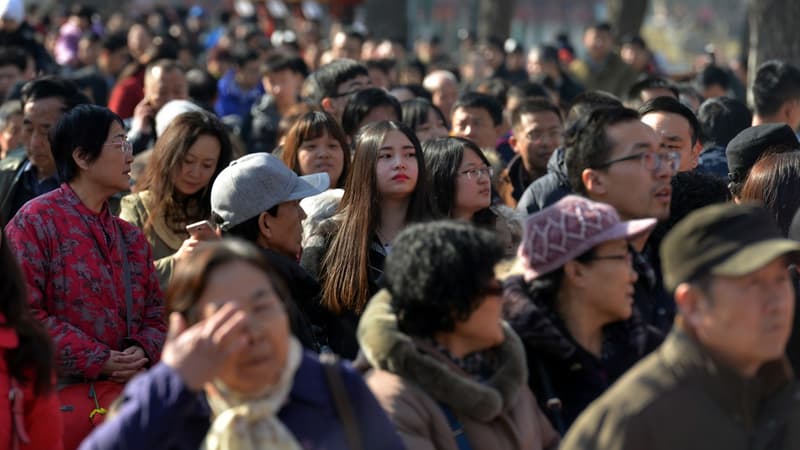Retail sales in China posted their first contraction in six months in October as the country grapples with a rebound from the Covid-19 epidemic, official figures showed on Tuesday.
First hit by the coronavirus outbreak, China is the latest major economy to pursue a zero-tolerance strategy against the virus, officially due to low vaccination rates among the elderly.
This health policy leads to almost daily screening of the population, mandatory quarantines for people who test positive, or even lockdowns as soon as cases appear.
These measures, which involve a significant economic cost and generate a lot of uncertainty, are a brake on activity and consumption.
The main indicator of household spending, retail sales fell 0.5% year-on-year last month, the National Bureau of Statistics (BNS) said.
The index rose another 2.5% in September.
Analysts surveyed by the Bloomberg agency anticipated a slowdown, but more moderate with an index still positive (+0.7%).
Retail sales had not been in the red since May, when the economic capital Shanghai was in full containment.
rain of optimism
This figure “shows the optimism” of recent days since Beijing announced several measures to revive its economy, said analyst Ken Cheung of Japan’s Mizuho bank.
China markedly reduced the length of the quarantine for international arrivals on Friday.
Since 2020, the borders have remained closed to most foreigners, which affects human exchanges and the operation of many multinationals.
Beijing also unveiled measures to support the real estate sector, a sector crucial to its growth but one that the pandemic and tightening financing rules have left without bloodshed.
This key sector of the economy, which supports an army of low-skilled workers, weighs with the construction sector around a quarter of GDP.
Many economists doubt, however, that these measures are enough to reactivate demand for real estate, at a time when households are tightening their belts.
For its part, industrial production slowed down in October, with an increase of 5% in one year, compared to 6.3% a month earlier.
A rate there also well below the expectations of analysts consulted by Bloomberg (5.3%).
In October, “activity slowed down due to deteriorating sanitary conditions (in China) and weak overseas demand” for Chinese products, said analyst Zhiwei Zhang of Pinpoint Asset Management.
The worst to come?
The country has faced in recent weeks a rebound in the epidemic, which affects many provinces, including Guangdong (south), a major manufacturing center.
China on Tuesday reported nearly 18,000 new positive cases of Covid-19 across the country, the highest number since the Shanghai lockdown in April.
For its part, investment in fixed capital slowed down in October to register a rise of 5.8% in the first ten months of the year.
As for the unemployment rate, it remained stable at 5.5%.
Particularly watched by the authorities and calculated only for urban workers, the unemployment rate had reached an almost historic threshold in April (6.1%), before declining.
In November, economic data “looks much worse,” warns analyst Zichun Huang at Capital Economics.
“With exports slowing, a housing sector still stagnant, and a zero-covid policy set to last, the near-term outlook is bleak,” Ms. Huang said.
Sign of the ambient weather: E-commerce giant Alibaba did not release numbers for its “Singles’ Day” this year, a huge online sales operation that ended on Friday.
Source: BFM TV


